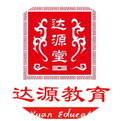
Traditional Chinese Medicine (TCM) emphasizes the importance of differentiation in treatment. There are several methods of differentiation, including organ differentiation, six meridian differentiation, and the Eight Principles (Ba Gang) differentiation. So, what is the Eight Principles differentiation? The Eight Principles—Yin, Yang, Exterior, Interior, Cold, Heat, Deficiency, and Excess—are the core components of TCM differentiation. Through clinical practice, by utilizing the four diagnostic methods, we can grasp the condition of the patient and analyze and summarize the findings according to the progression of the disease, categorizing the identified syndromes into eight types (the Eight Principles). Each category has its representative characteristics, which are used to determine the nature of the disease, leading to an accurate diagnosis and subsequent treatment plan.
1. Yin-Yang Differentiation
Yin and Yang represent the two opposing yet unified aspects of all things. In the Eight Principles, Exterior, Heat, and Excess are considered Yang syndromes; Interior, Cold, and Deficiency are Yin syndromes. Therefore, Yin and Yang essentially serve as the overarching principles within the Eight Principles. Generally, patients with Yang syndromes exhibit more heat and excess, while those with Yin syndromes tend to show more deficiency and cold.
1.1 Yin Syndrome
From observation, a patient with Yin syndrome may present with a dull complexion, lack of energy, fatigue, sluggish movements, a preference for lying down, a desire for quietness, minimal speech, a soft voice, sensitivity to cold, a preference for warmth, cold extremities, a pale tongue with a white, greasy coating, and a weak, slow pulse.
1.2 Yang Syndrome
Patients with Yang syndrome typically have a red complexion, bright eyes, high fever, thirst, agile movements, irritability, dry and cracked lips, loud and forceful speech, coarse breathing, dry and foul-smelling stools, red tongue with a yellow, thick coating, and a rapid, strong pulse.
2. Exterior-Interior Differentiation
The concept of Exterior and Interior refers to the depth of the disease. When external pathogens invade the body, if the disease is in its early stages and the external pathogen is still affecting the skin and muscles, it is classified as an Exterior syndrome; if the external pathogen penetrates deeper or if the disease originates internally, it is classified as an Interior syndrome.
2.1 Exterior Syndrome
When the six external pathogens harm the skin, patients may experience headaches, sensitivity to cold, nasal congestion with excessive mucus, body aches without sweating (or with sweating), normal bowel movements, a thin white tongue coating, and a floating or tight pulse.
2.2 Interior Syndrome
Interior syndromes occur when the disease penetrates deeper or originates internally. For example, in cases of typhoid fever with Yangming organ syndrome, symptoms may include fever, sweating, irritability, abdominal distension with tenderness, dry stools, delirium, and a strong pulse; or in cases of warm disease with heat penetrating the pericardium, symptoms may include confusion, thirst, and a large, rapid pulse. Diseases resulting from deficiency of Qi and blood, damage to the five organs, or emotional distress are also classified as Interior syndromes.
3. Cold-Heat Differentiation
Cold and Heat represent two distinctly different natures of disease. Cold syndromes are caused by the body being affected by cold, often resulting in a decline in function; conversely, Heat syndromes are characterized by an excess of function due to heat invasion.
3.1 Cold Syndrome
Symptoms may include a pale complexion, cold extremities, lack of thirst, fatigue, loose stools, clear and frequent urination, a pale tongue with a slippery coating, and a slow, weak pulse.
3.2 Heat Syndrome
Symptoms may include fever without sensitivity to cold, sensitivity to heat, irritability, thirst, a desire for cold drinks, red and hot urine, dry and foul-smelling stools, a red face, dry and cracked lips, a red tongue with a yellow coating, and a rapid pulse.
4. Deficiency-Excess Differentiation
Deficiency refers to a deficiency of Zheng Qi (the body’s vital energy), while Excess refers to the presence of pathogenic factors. Generally, robust individuals who become ill for the first time tend to exhibit Excess syndromes, while those who are weak and have been ill for a long time often present with Deficiency syndromes.
4.1 Deficiency Syndrome
Patients may appear weak, with a pale complexion, brittle nails, shortness of breath, fatigue, low voice, a preference for lying down, reduced appetite, lack of energy, timidity, forgetfulness, diarrhea with undigested food, cold extremities, dizziness, palpitations, insomnia, night sweats, a pale and swollen tongue with teeth marks, and a weak pulse.
4.2 Excess Syndrome
Commonly seen are both Exterior and Interior Excess syndromes.
(1) Exterior Excess syndrome occurs when external pathogens obstruct the skin, preventing Lung Qi from dispersing, leading to symptoms such as fever, sensitivity to cold, body aches without sweating, and a floating pulse.
(2) Interior Excess syndrome can be due to heat, presenting with symptoms such as a red complexion, coarse breathing, fever, irritability, delirium, dry stools, foul-smelling diarrhea, red and hot urine, a yellow, thick tongue coating, and a strong pulse; or it can be due to cold, presenting with abdominal distension, cold extremities, a slow pulse, and a white, slippery tongue coating. Treatment should focus on warming methods.
The Eight Principles discussed above are categorized for clarity, but they should not be viewed in isolation. They must be integrated and analyzed to distinguish the primary and secondary aspects, allowing for effective clinical application.
In practice, patients often present with combinations of deficiencies and excesses, or combinations of cold and heat, such as exterior cold with interior heat, exterior heat with interior cold, or exterior deficiency with interior excess, and vice versa.
In Heat syndromes, there can also be phenomena of true cold and false heat, such as thirst without a desire to drink, a preference for warmth despite a hot body, a red face with cold extremities, agitation with weakness, a pale and greasy tongue, and a weak pulse; or true heat and false cold, where patients feel cold but do not want to wear clothes, with cold extremities and a hot body, diarrhea that is dark and foul-smelling, a dry white tongue, and a strong, wiry pulse.
In Deficiency-Excess differentiation, attention should be paid to the duration of the illness, the strength of the body, and the age of the patient. Sometimes, there may be a mixture of deficiency and excess, where the surface appears deficient but is actually excess, or vice versa. As the ancients said: “Great excess may appear as deficiency, and true deficiency may have a strong appearance.”
Source: Internet,For copyright issues, please contact for removal~



